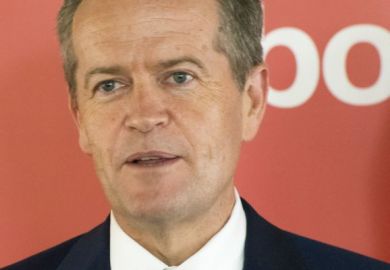The surprise at Jacinda Ardern’s and Nicola Sturgeon’s decisions to quit as premiers of New Zealand and Scotland reflects how unusual it is for leaders to choose the time and manner of their departure.
Neither left at the peak of their popularity or success, but nor had they reached the end of the road.
In democracies, elections provide a default mechanism for deciding if a political leader should stay or go, but in other professions there is rarely a signal so black or white – short of being sacked.
In our cover story, we hear from university leaders who have faced their own Waterloo, and their reflections on the pros and cons of shorter or longer tenures at the top.
The general trend has been for greater churn in recent years – perhaps driven by the stresses and strains of seeing an organisation through a crisis such as the Covid pandemic.
But it is always interesting to test such theories, and so talking to Michael Roth, the long-serving president of Wesleyan University, a prestigious private liberal arts institution in Connecticut, I asked if the job had got harder in his two decades at the top.
“Not for me, I’ve been doing it so long it’s actually gotten a little easier,” he said. “Have a very good provost, that’s the real job – and I have had very good provosts.”
There is, no doubt, plenty of truth in this (particularly in the context of an elite, private institution in the US), and it must be the case that experience makes it easier to bear the strains of the job.
But Roth acknowledged that recent events had thrown up particularly intense periods of pressure.
“I found the pandemic incredibly challenging and stressful – one didn’t know what the life and death issues were,” he said.
Over a long tenure “those things do happen, but I think that if you were a president in 1968, if you were a president trying to figure out whether to take a stance against the Vietnam War, that must also have been really hard”.
One of his pieces of advice for other leaders is that, in order to be well placed to respond effectively when inevitable challenges arise, “continuing to teach is really important”.
That is “first of all because much of the administrative work one does isn’t actually that important” (although someone – that provost, perhaps – has to do it) but also because “spending time with students and faculty on the core thing that they do” makes it easier to navigate the hard times.
Roth also acknowledged that “the politics of the job has got more challenging” recently, but said this was also an opportunity for university leaders to step up (an argument he also makes in a recent blog for Times Higher Education about fending off political overreach).
“I met with a group of presidents six months ago and they were talking about how hard it is with state legislatures pushing back against higher education,” Roth explained.
“I am lucky, I’m in a private institution – but my question was, how many people have actually been fired for taking a stand? They couldn’t think of a single one.
“And I think it’s important that presidents take stands, not because they are going to be right every time, but because they will be seen as actors in the public sphere, actors in the education sphere.
“You learn from mistakes, but for some people there’s the threat of ‘either I’m successful or I am fired’, and that makes it very hard and I think governing boards should resist that.”
This message is one that is made equally forcefully in an opinion piece this week by Holden Thorp, editor-in-chief of the Science journals and former chancellor of the University of North Carolina.
Thorp recounts numerous examples, including his own, to make the case that presidents who refuse to buckle to external pressure, stand with their faculty and stand up for what they believe in tend not only to survive, but also to go on to other, bigger jobs and greater professional success.
For Roth, having 16 years leading Wesleyan has enabled him to “see if what I’ve started works”.
“People who leave after five or six years, they don’t know – things don’t happen that quickly,” he said. “I think the job of a president is to raise resources, and then get out of the way to let people get on with the things they are good at. Experiment. And when it fails, try something else.”
It sounds like an ideal formula for the job. But it’s one that leaders of institutions with less financial and political autonomy may view more as a dream than a reality.
Register to continue
Why register?
- Registration is free and only takes a moment
- Once registered, you can read 3 articles a month
- Sign up for our newsletter
Subscribe
Or subscribe for unlimited access to:
- Unlimited access to news, views, insights & reviews
- Digital editions
- Digital access to THE’s university and college rankings analysis
Already registered or a current subscriber? Login






